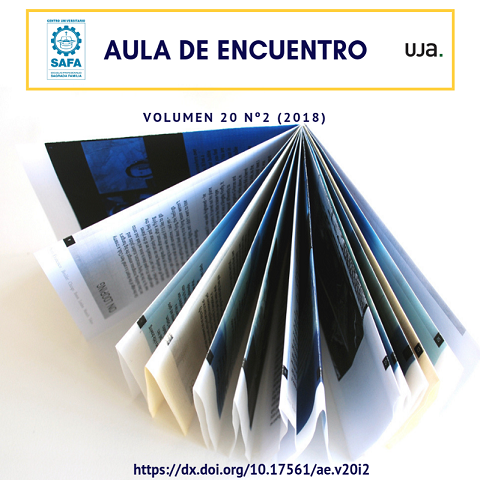Using the flipped classroom model in teacher education – is turning the tables the way forward?
DOI:
https://doi.org/10.17561/ae.v20i2.10Palabras clave:
educaciónResumen
This paper presents a flipped classroom project carried out on the Primary Education degree in the University of Cadiz.
The initiative responded to the need to introduce a new way of working as students react with a higher level of interest and involvement to practical dynamics than to the traditional theory class.
Difficulty in maintaining their focus during a theory class, trying to assimilate the concepts at the same time as they take notes and losing the thread during the explanations because they work at a slower or faster rate than the rest of the group were some of the problems our students were facing. These students would benefit from working with the material before the class at home and at their own pace, freeing up class time for collaborative, practical activities to exemplify and expand the concepts.
We analyse the key aspects of this methodology, paying special attention to the advantages and difficulties we faced during its implementation.
Descargas
Descargas
Publicado
Número
Sección
Licencia
Los autores que publican en esta revista están de acuerdo con los siguientes términos:
- Los autores conservan los derechos de autor y garantizan a la revista el derecho de ser la primera publicación del trabajo al igual que licenciado bajo una Creative Commons Attribution License que permite a otros compartir el trabajo con un reconocimiento de la autoría del trabajo y la publicación inicial en esta revista.
- Los autores pueden establecer por separado acuerdos adicionales para la distribución no exclusiva de la versión de la obra publicada en la revista (por ejemplo, situarlo en un repositorio institucional o publicarlo en un libro), con un reconocimiento de su publicación inicial en esta revista.
- Se permite y se anima a los autores a difundir sus trabajos electrónicamente (por ejemplo, en repositorios institucionales o en su propio sitio web) antes y durante el proceso de envío, ya que puede dar lugar a intercambios productivos, así como a una citación más temprana y mayor de los trabajos publicados (Véase The Effect of Open Access) (en inglés).
![]()
Este obra está bajo una licencia de Creative Commons Reconocimiento 4.0 Internacional.












